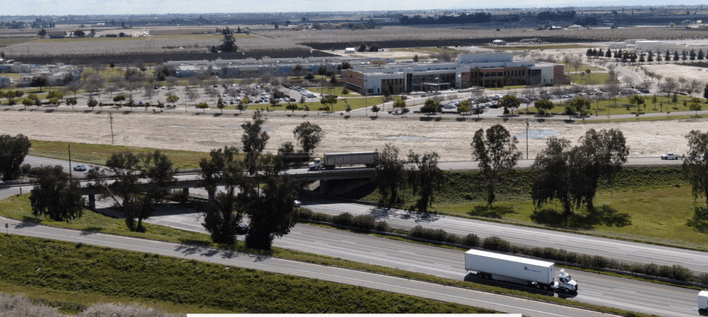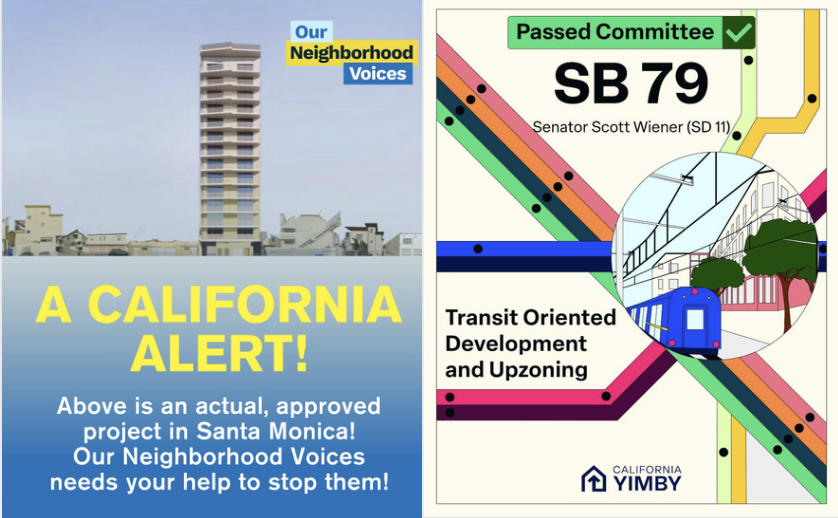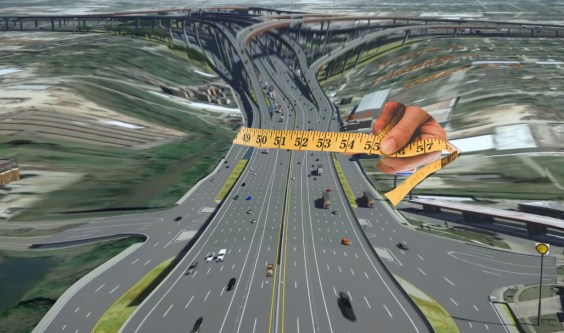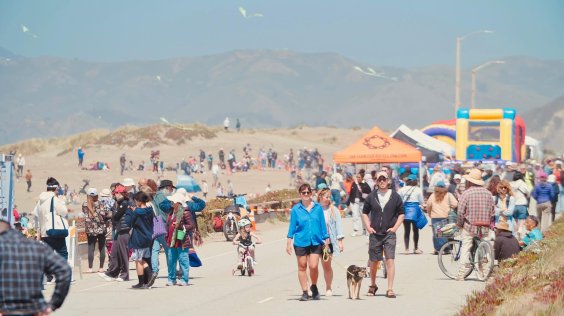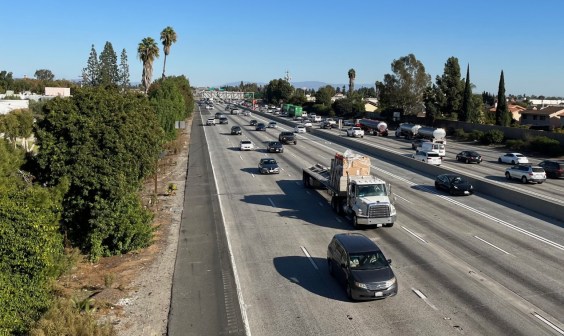This post originally appeared on Fresnoland. Reprinted here with permission.
What's at stake:
For the last two years, Caltrans leaders have known about a massive industrial park proposal that stood to gain complete freeway access from the state agency's set of $140 million interchange projects.
The state agency failed to disclose this in their environmental review.
Critics say it's an abuse of power.
Over the past four years, Caltrans undertook a controversial project to enhance freeway access in south central Fresno that had the potential to alter the health of hundreds of thousands of residents.
The state agency was required by law to quantify the human costs of their highway expansion – in terms of new cases of asthma, stroke, and premature death.
Not only did Caltrans fail to perform those duties, an investigation by Fresnoland shows, it also failed to disclose to the public and federal regulators a fundamental part of the project – a massive industrial park – that would have drastically altered the state agency’s conclusions about the impacts of its freeway project.
A whistleblower inside the agency is now saying she raised concerns about the potential impacts of the project, but was ignored.
Caltrans declined to comment on this story.
Fresnoland looked at hundreds of internal emails, official documents and interviewed a dozen industry experts. The revelations that have emerged from this examination have massive implications, experts say, for Caltrans’ approval of a pair of $140 million interchange expansions that will pave the way for Fresno’s next generation of industrial and warehouse development.
Caltrans officials met with Fresno County officials on Sept. 9, 2021, according to emails acquired by Fresnoland through the Public Records Act, to discuss a proposed 3,000-acre industrial park that would lie between the state agency’s two interchange expansions, on North and American avenues, along Highway 99. Bernard Jimenez, the deputy director of public works for Fresno County, confirmed the industrial park was presented to Caltrans at the meeting.
Despite being briefed on the warehouse development plans while the agency was preparing its environmental review, the proposed industrial park is nowhere to be found in Caltrans’ environmental review for the interchange projects.
Diana Gomez, the Caltrans district director who signed off on the environmental review for the expansion, was one of three Caltrans officials who attended the meeting, according to Jimenez. Michael Navarro, Caltrans’ deputy director for environmental analysis in the San Joaquin Valley, and staff member John Liu also attended the meeting, Jimenez added.
Gomez, Navarro, and Liu declined to comment.
Knowledge of the industrial park “blows Caltrans’ environmental review out of the water,” said David Pettit, an independent senior attorney at the National Resource Defense Council who is not involved in the issue.
“To not look at this industrial park – that looks highly questionable to me,” said Pettit. “They need to go back to the drawing board.”
‘This is something that shouldn’t stand’
The disclosure that state officials were at the meeting could prove critical for south central Fresno residents.
The residents filed a lawsuit in April, demanding accountability from Caltrans for the public health impacts of their project, which one top scientist said will impact the health of millions of Central Valley residents.
In the discovery phase of the residents’ lawsuit, the three-firm legal team representing residents allege Caltrans did not hand over emails exchanged with Fresno County which set up the Sept. 9, 2021, meeting.
The emails show that the interchange project’s key health impacts to nearby communities are being ignored, said Sandra Celedon, the executive director of Fresno Building Healthy Communities.
“This is systemic racism. A state agency is gaslighting communities of color by telling residents this highway expansion is not going to make things worse for them, when in fact Caltrans knows the exact opposite,” she said.
In some of the most toxic census tracts in the state, Caltrans’ interchange projects risk creating a tidal wave of pollution within 100 yards of a 1,400-bed juvenile detention center. The interchanges would enable Fresno County’s most ambitious project in decades, a 3,000-acre industrial park which currently does not have complete highway access.
But it will if the interchanges are built. According to industry-standard engineering equations, the industrial park will add 4 million to 17 million truck trips annually to south central Fresno.

But instead of analyzing these impacts, the state agency’s environmental report completely overlooks them. It does so by making claims, according to top scientists Mike Kleeman, a UC Davis professor, and Ed Avol, a USC professor, which ignore the fundamental fact that air pollution is airborne.
And in what critics call an attempt to keep the resident’s budding lawsuit at bay, the state agency is using legal tactics that could add hundreds of thousands of dollars in new legal costs on south central Fresno community groups.
Celadon called Caltrans’ actions an “absolute abuse of power.”
“This is something that shouldn’t stand,” she said. “Caltrans should rescind their approval for this project immediately.”
Whistleblower claims Caltrans refused to acknowledge industrial park
The agency’s omission of the industrial park was “deliberate,” said Jeanie Ward-Waller, a top Caltrans executive who remains on leave for blowing the whistle on the agency’s actions on similar highway expansions in northern California.
As the Fresno project’s environmental review was being finalized in 2022, Ward-Waller told Fresnoland, she raised concerns inside the agency about leaving the industrial park out of the analysis.
Her concerns fell on deaf ears at Caltrans’ San Joaquin Valley headquarters, she said.
Ward-Waller said she raised the fact that Rob Bonta, the state’s Attorney General, had expressed concerns about industrial plans near interchanges. “Let’s make sure that we’re not contradicting what another state agency is saying about impacts in this area to particular communities,” Ward-Waller said.
“The district felt like they had followed procedures,” she added.
The question of the industrial park is the heart of the controversy about Caltrans’ approval for the $140 million set of interchange improvements.
Early in the project’s planning stages, before Caltrans knew about the industrial park, the EPA waived a common requirement, a Clean Air Act analysis, after Caltrans told the federal agency that the highway expansion would cause “no new truck traffic.”
But even after the state agency was briefed by Fresno County about the industrial park, Caltrans failed to double check with the EPA about whether a Clean Air Act analysis was truly required.
Caltrans also did not update its community impact memo, which cites Fresno County officials as saying no changes in land use were being proposed in the area.
As a result, the state agency says, its interchange projects will cause zero traffic impacts.
The EPA’s consultation with Caltrans ended in July 2020, according to EPA spokesperson Michael Brogan. That’s 14 months before Caltrans knew about the industrial park.
New information about the project, Brogan added, would have triggered a new look from the federal agency into Caltrans’ Clean Air Act exemption. The EPA has declined to comment about its renewed talks with Caltrans since March 2023.
Caltrans’ omissions in the environmental review, Ward-Waller believes, are meant to “get around avoiding having to talk about more vehicle miles traveled, more emissions, and more impacts on environmental justice communities.”
Since that decision, nothing – not even pushback from the state and federal public health watchdogs – has reversed the state agency’s approval of the interchange expansions.
In May, citing the unanalyzed impacts of the industrial park, a top California Air Resources Board (CARB) official called on Caltrans to redo its environmental review.
Chanell Fletcher, CARB’s head of Environmental Justice, wrote a letter to Gomez, Caltrans’ regional director, saying that “expected industrial development served by the Project’s upgrades,” such as the Fresno County industrial park, “should have been considered in Caltrans’ cumulative impact analysis.”
It was unclear, Fletcher said, whether Caltrans completed a cumulative impact analysis at all.
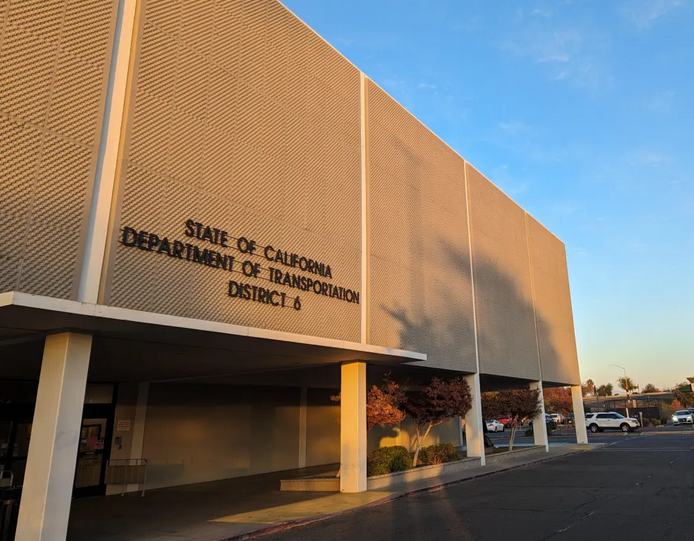
Caltrans’ knowledge of the industrial park prior to completing its environmental review puts the agency’s documents into serious legal doubt, said Josh Chatten-Brown, the managing partner at a southern California law firm who has litigated CEQA cases against Caltrans.
“If Caltrans knew about this industrial park while it was performing its environmental review, excluding it from their analysis would likely be a violation of CEQA,” said Chatten-Brown.
Other key details were also missing from the agency’s environmental review.
The agency failed to estimate one of the key pollution sources of the highway expansion – Nitrogen Oxides (NOx) – a class of compounds that come from diesel exhaust. A thorough review by Fresnoland of Caltrans’ documents found no record of any attempt to quantify how much NOx would be emitted as a result of the highway expansion.
Ward-Waller said Caltrans’ approach has grown out of lax oversight on the agency.
“We have so many projects going on all the time. Nobody has the ability, funding, or resources to sue us every time we do a project like that,” she said.
“So we got away with it. And the districts learned that’s how to do business.”
Caltrans ‘ignores everything we know about air pollution,’ USC professor says
Even if Caltrans had acknowledged the industrial park, the state agency has used other reasons for its refusal to conduct a public health analysis in its environmental review.
To fend off arguments against its environmental review, the state agency is using outlandish reasoning that has no basis in science, said Ed Avol, a renowned USC professor who is one of the top air quality scientists in the United States.
The state agency said a public health analysis wasn’t needed because people didn’t live literally on the highway property.
“No populations were identified within the project area; therefore, it was determined that the project would not have a disproportionate adverse environmental impact,” Caltrans said in its environmental review.
The argument is repeated in another part of Caltrans’ environmental review. “No environmental justice populations have been identified within the project area and therefore would not be affected by the proposed improvements.”
High childhood pollution exposure can lead to altered brain development, as well as obesity and metabolic diseases. Choices made by top Caltrans officials could cause similar effects on generations of Fresno children, including the kids at the juvenile detention center.
Ed Avol, USC
“Decisions like this will impact their entire life,” he said. “Air quality is going to change dramatically, which is already terrible in Fresno. This is something that has a long-lasting footprint.”
Avol said Caltrans’ analysis is a gross failure.
“Caltrans’ reasoning ignores everything we know about air pollution,” said Avol.
“They have not done their due diligence. Unfortunately, they often do quick and sloppy work.”
Mike Kleeman, UC Davis professor who has authored nearly every major San Joaquin Valley air quality study over the last two decades, said Caltrans’ reasoning was “counter-intuitive.”
“I don’t believe that there’s ever a situation where one can say that if no one lives on the land where I am going to build the highway, there are no public health impacts,” he said. It is widely known, Kleeman said, that roadside air pollution disperses out of a highway’s boundaries.
Caltrans “seems to be skipping major steps in the approval process that are not optional. That’s not how the permitting process is supposed to work,” he said.
Caltrans also declined to comment on the concerns raised by Kleeman and Avol.
The potential impact of Caltrans’ project would be enormous, said Avol, who co-authored a definitive paper 30 years ago which showed how highway development stunts children’s lung and body development.
The latest research, Avol added, is even stronger. His colleagues’ work at USC shows high childhood pollution exposure can lead to altered brain development, as well as obesity and metabolic diseases.
He said choices made by top Caltrans officials could cause similar effects on generations of Fresno children, including the kids at the juvenile detention center.
“Decisions like this will impact their entire life,” he said. “Air quality is going to change dramatically, which is already terrible in Fresno. This is something that has a long-lasting footprint.”
Critics question Caltrans legal maneuvers
This March, in the wake of Caltrans’ failure to redo its environmental analysis, lawyers with Leadership Counsel for Justice and Accountability filed a lawsuit in federal court against Caltrans and the Federal Highway Administration, who also played a key supporting role in the Fresno interchange projects.
To take on the highway agencies, Leadership Counsel filled up a deep bench of lawyers from across the state, ranging from Public Interest Law Project in Oakland to Stanford University in Palo Alto.
As the case moves its way through the legal system, however, the state agency is using legal maneuvers, said Pettit, the NDRC lawyer, that will increase the amount of resources that local community groups need to seek justice.
In May, Caltrans moved to cross-file the federal suit into state court, creating a second court case on the same topic, according to court filings.
The state agency’s move, said Pettit, the NDRC lawyer, functions as a pay-to-play strategy. By filing in state court, Caltrans is creating a new six-figure legal bill for Fresno-based community groups.
“This is not surprising. Caltrans tries to avoid the merits of the community’s case against them by trying to make the record as expensive as possible, hoping that the community groups can’t pay and then the case will go away,” said Pettit. “I’m not sure that this kind of defensive tactic is likely to work for them.”
Lawyers for the community groups say that Caltrans’ cross-filing move has no legal merit.
Their lawsuit involves the state agency’s public health analysis, which has been ruled in a previous Ninth Circuit federal case to have nearly identical legal standards under state and federal law.
“We urge Caltrans to … have these closely related claims be litigated before the same judge in federal court as it has done in the past,” said Stephanie Safdi, a Lecturer in Law at Stanford Law School, in a letter to Caltrans.
‘Why ever trust them again?’
In 2016, when the warehouse boom started in earnest in south central Fresno, nearby residents formed the South Fresno Community Alliance to make the City of Fresno accountable for the neighborhood impacts of a million-square-foot Amazon warehouse.
Their coalition won an unprecedented community agreement in March 2021 to have the warehouse developers pay for HVAC upgrades in their homes. Ever since, these residents have been meeting monthly to discuss which industrial rezones in their backyard they should battle.
This January, when Caltrans announced its approval for the interchange expansions, the group immediately went to work.
“We decided to fight this Caltrans project because, quite literally, our livelihoods, our health are at stake,” said Panfilo Cerillo, a south central Fresno resident. “Caltrans was opening the floodgates.”
Another Fresno resident, Mary Guiterez, said the industrial park emails show Caltrans is trying to exploit south Fresno communities.
“This is perfect proof that Caltrans is carrying the water for Fresno County,” said Guiterez. “I don’t think we’re going to get any justice when we get used in this way.”
Cerillo listed a score of Caltrans blunders, including the “paltry trees” the state agency used as a mitigation measure for the interchange projects and its failure to count the key pollution source that would cause some of the most harmful health impacts to local residents.
Looking at a hard copy of the industrial park emails, Cerrillo said their decision to keep it out of the agency’s environmental review “takes the cake.”
"The worst part is that in the official record, they left out the massive industrial park that their project will build freeway access for,” Cerrillo said.
“Why ever trust them again? They knew what they were doing all along, and they hid it from us.”
This post originally appeared in Fresnoland. Go over there and support their important work!
